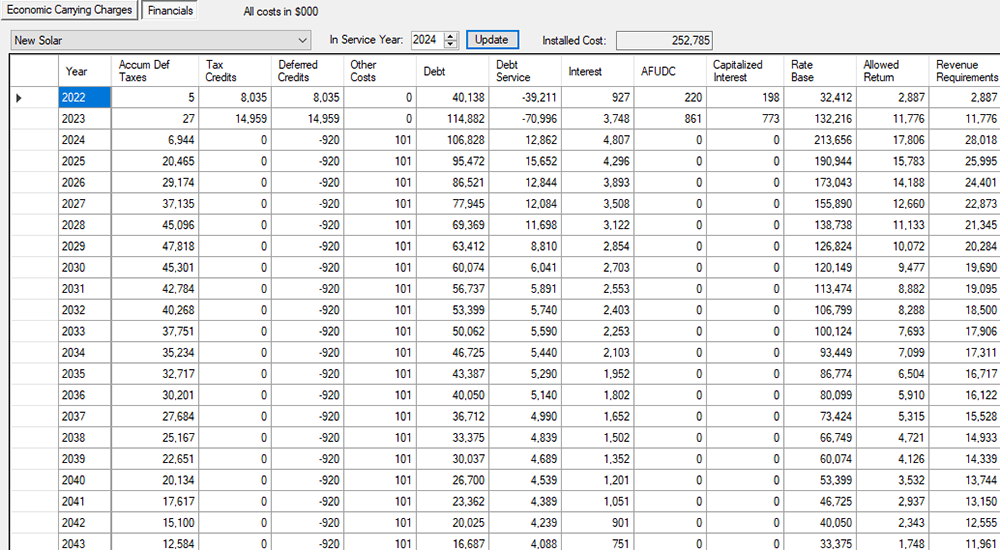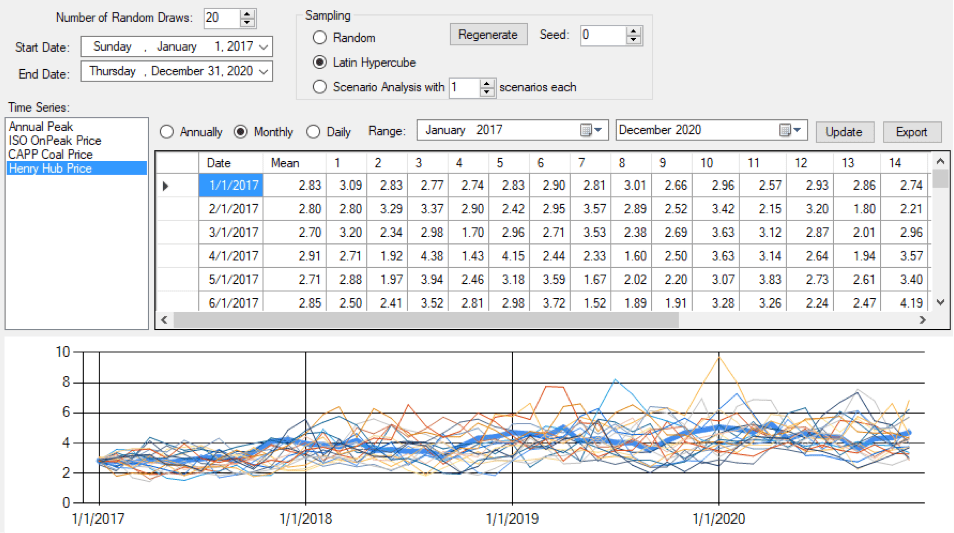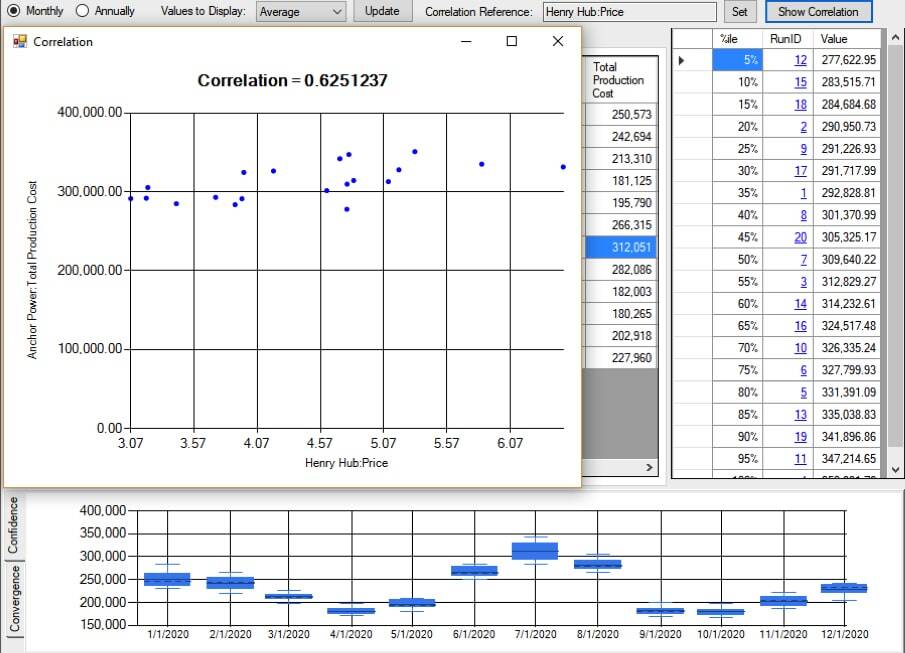Energy Models for Valuation and Risk Assessment
Valuation and Risk Assessment
Produce powerful valuations for project finance, tax assessments, budgeting, rate cases, and developing hedging strategies.
EnCompass provides a detailed commitment and dispatch optimization model to capture all operating constraints. This allows you to project future operations and financial metrics for a single power project or a portfolio of energy assets.
Use better reporting and tools to forecast expected future market conditions, and assess the risk associated with uncertain and volatile market drivers.


Uncertainty and Risk
Apply advanced risk modeling to any time series value, commodity price, interest rate, cost, demand, and renewable generation.
Use a two-factor, mean-reverting energy model with short-term market volatility that tends toward a long-term fundamental outlook, which can be uncertain. Probability distributions can be lognormal, suitable for prices that are positive and skewed higher, as well as normal or uniform.
Historical distributions that draw from actual past conditions inform weather-related variables such as demand and renewable generation.
You can also define correlation among time series to represent the interdependence on market drivers.
Sampling and Flexible Dispatch Options
EnCompass uses Monte Carlo sampling to assess market and portfolio impacts due to uncertain prices and volume. This sampling can be completely random or utilize Latin Hypercube Sampling, which takes points equally across a distribution and requires fewer draws for convergence.
The Position report displays a complete picture of all possible outcomes and calculates and displays relevant statistics including mean, deviation, confidence intervals, and correlation factors. Scatter plots and box-and-whiskers charts provide a visual indication of relationships and distributions.
You can add financial contracts such as fuel cost hedges after simulations to assess the impacts on expected values and volatility.


Co-Optimization of Renewable Energy Resources
EnCompass provides all the necessary features to quantify the impacts of renewable and storage integration at the sub-hourly level.
EnCompass co-optimizes limited energy resources such as hydro, storage, and demand response with load shifting or “bounce back.” You can model intermittent renewable resources, such as wind and solar, with daily profile shapes down to the one-minute level. Combined with the ramp rate restrictions on dispatchable resources, EnCompass provides all of the necessary features to quantify the impacts of renewable and storage integration at the sub-hourly level.
When planning maintenance for resources, you may enter historical or planned dates that repeat in the future, for example, every 12 or 18 months. Each potential outage may also have an allowable shift, which allows EnCompass to determine the optimal timing of planned outages within a region. It can then randomly determine unplanned outages for each resource based on input-forced outage rates and lengths. The structured scenarios within EnCompass make it easy to use the same outage schedule from a long-term parent scenario to multiple child scenarios.
Full Optimization of Resources
Perform a full optimization of all resources, subject to a complete set of operating costs and constraints.
By using mixed integer programming, EnCompass determines the best combination of resources to commit and the appropriate dispatch levels for each operating day’s intervals. Besides minimum uptime and downtime requirements, EnCompass can cap the number of starts and shutdowns and recognize costs and fuel requirements for hot, warm, and cold starts and shutdowns.
You can set heat rates and dispatch costs for the minimum (no-load) operating level, plus any number of blocks up to maximum capacity. You can define any number of fuels for a resource, and EnCompass will use the least-cost fuel, subject to minimum and maximum limits.
Dependency constraints and waste heat recovery allow you to model combined cycle resources as complete configurations or as individual components.
You may assign resources to multiple environmental programs, which may include mass-based emission allowances, rate-based emission rate credits, or renewable energy credits.

MORE INSIGHTS
.png)
Boost Productivity with a Cloud-Based Power System Modeling Software
.png)
Why Combined Cycle Gas Plants Still Matter in a Rapidly Changing Grid
.png)







